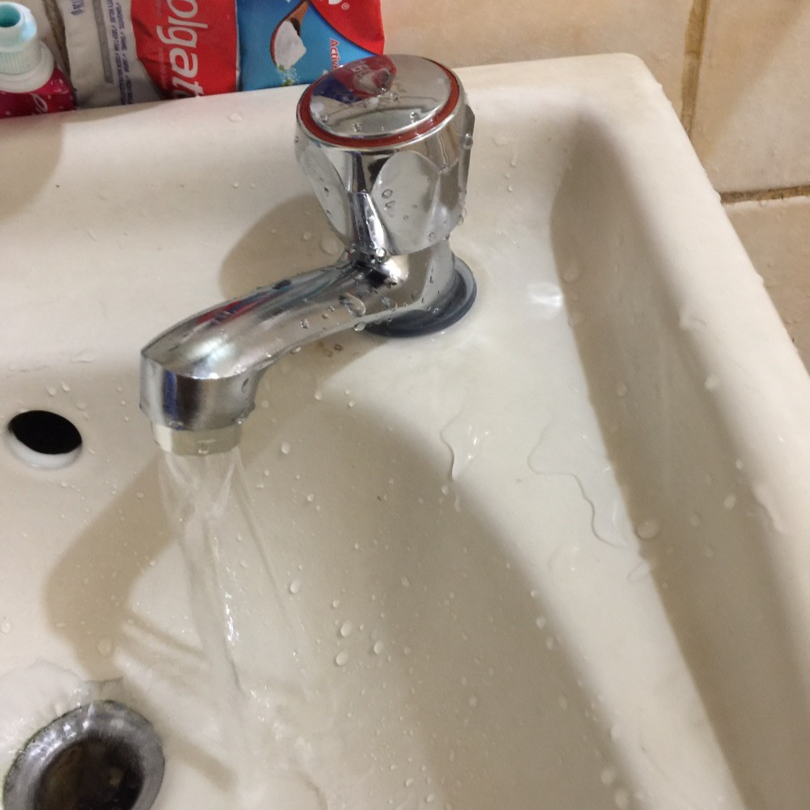We have noticed this post pertaining to Why It's Important to Fix Leaky Faucets listed below on the web and think it made good sense to talk about it with you on my blog.

Trickling faucets might look like a minor hassle, but their impact surpasses simply the nuisance of the noise. From wasting water to sustaining unneeded monetary costs and wellness dangers, ignoring a trickling faucet can lead to different consequences. In this post, we'll delve into why it's crucial to resolve this common home concern quickly and properly.
Wastage of Water
Ecological Influence
Dripping taps add considerably to water waste. According to the Epa (EPA), a solitary faucet dripping at one drip per second can squander greater than 3,000 gallons of water each year. This not just pressures water sources however additionally affects ecosystems and wild animals based on them.
Step-by-Step Guide to Fixing a Dripping Tap
Tools Called for
Prior to trying to fix a dripping tap, gather the needed tools, consisting of an adjustable wrench, screwdrivers, substitute components (such as washing machines or cartridges), and plumber's tape.
Usual Faucet Issues and Their Solutions
Determine the type of faucet and the specific concern triggering the drip. Usual troubles consist of worn-out washers, rusty shutoff seats, or malfunctioning O-rings. Refer to producer instructions or on the internet tutorials for step-by-step advice on fixings.
Financial Prices
Enhanced Water Costs
Past the environmental impact, trickling taps can inflate water expenses substantially. The collected wastefulness in time translates into higher energy expenditures, which can have been stayed clear of with prompt repairs.
Potential Home Damage
In addition, extended trickling can lead to damage to fixtures and surface areas bordering the tap. Water buildup can create discoloration, rust, and also structural concerns if left unattended, leading to extra repair service expenses.
Health and wellness Concerns
Mold and Mold Development
The consistent existence of wetness from a trickling tap develops a perfect atmosphere for mold and mold growth. These fungis not just compromise indoor air high quality but likewise present wellness threats, particularly for people with respiratory system problems or allergic reactions.
Waterborne Conditions
Stationary water in trickling taps can become a breeding place for microorganisms and other microorganisms, enhancing the risk of waterborne diseases. Pollutants such as Legionella bacteria grow in stationary water, potentially resulting in serious ailments when consumed or inhaled.
DIY vs. Expert Repair work
Advantages and disadvantages of DIY Fixing
While some may try to take care of a dripping tap themselves, DIY repair services come with their very own set of obstacles. Without appropriate expertise and devices, do it yourself efforts can intensify the problem or result in incomplete repairs, extending the issue.
Advantages of Hiring a Professional Plumber
Working with a specialist plumber makes certain that the underlying root cause of the leaking tap is attended to successfully. Plumbers have the competence and equipment to detect and repair faucet problems efficiently, saving time and reducing the risk of further damage.
Environmental Responsibility
Private Payment to Conservation
Taking responsibility for repairing dripping taps aligns with wider efforts towards water preservation and environmental sustainability. Every person's actions collectively make a significant effect on protecting priceless sources.
Lasting Living Practices
By focusing on prompt repair work and taking on water-saving routines, individuals add to sustainable living methods that profit both existing and future generations.
Safety nets
Routine Maintenance Tips
To prevent dripping faucets, do routine upkeep such as cleansing aerators, inspecting for leakages, and changing damaged components without delay. Furthermore, consider setting up water-saving tools or upgrading to a lot more reliable fixtures.
Relevance of Prompt Repairs
Attending to trickling taps as quickly as they're noticed stops more water wastage and potential damages, ultimately saving both water and money over time.
Influence On Residential Property Value
Perception of Well-Maintained Residential Or Commercial Property
Preserving a building in good condition, consisting of resolving upkeep concerns like trickling taps, boosts its viewed value and charm among prospective buyers or occupants.
Impact on Resale Worth
Qualities with properly maintained plumbing components, including faucets, command greater resale values in the realty market. Addressing trickling taps can contribute to a favorable impression during property evaluations and arrangements.
Final thought
Dealing with a trickling faucet exceeds mere convenience; it's a vital step toward saving water, decreasing financial prices, and securing wellness and property. Whether through DIY fixings or professional aid, taking action to take care of dripping faucets is a small yet impactful method to advertise responsible stewardship of resources and contribute to a healthier, a lot more lasting future.
How to Fix a Leaky Faucet: Step-by-Step Repair Guide
A leaky faucet may seem like a simple annoyance, but if it's not fixed promptly, that leak could cost hundreds to potentially thousands. From water damage to mold, mildew, and high water bills, even a tiny leak can be catastrophic if left unattended. Damage like this can even affect the overall value of your home, so it's important to take the right approach for leaky faucet repair. You may need the help of a plumber in some cases, but we've got a few tips you can try on how to fix a leaky faucet before calling the pros.
Four Faucet Types
When you're learning how to fix a leaky faucet, the first step is knowing what kind of faucet you're working with! There are four common types.
Cartridge Faucets
Cartridge faucets come in one- or two-handled varieties. In one-handled cartridge faucets, hot and cold water combines in a single cartridge. In the two-handled versions, hot and cold water are controlled separately and mixed in the faucet.
Ball Faucets
Ball faucets have a single lever you push up and down to adjust the pressure and rotate to change the temperature. A slotted metal ball controls the amount of water allowed into the spout.
Compression Washer Faucets
They're the oldest type of faucet, but they're still used in many homes — especially older ones. Compression faucets have two separate handles that, when turned, raise or lower the washer that seals a water valve. This valve stops water from flowing through the faucet when it is turned off.
Disc Faucets
Disc faucets rarely need to be repaired due to their maintenance-free design. The water flow is controlled by two discs — the upper one raises and lowers against a fixed lower disc, creating a watertight seal. If your disc faucet starts leaking, you may need to replace the seals or clean residue buildup from the inlets.
Fixing a Leaky Faucet
Step 1: Turn Off the Water
Whether you're learning how to fix a leaky bathtub faucet or how to fix a leaky kitchen faucet, always turn off the water supply to your working area when you're fixing a leak. The last thing you want is a flood added to your list of things to fix.
Look for the shutoff valves below your sink or around the tub and turn them clockwise to stop the water flow. If your faucet doesn't have shutoff valves, you may need to turn off the water for the whole house. Check to make sure it's off by turning the faucet on. If nothing comes out, you're ready to start the repair.
Step 2: Take Apart the Faucet
How you disassemble your faucet depends on the type of fixture you have. You can use a flathead screwdriver to remove the caps on top of the handle or handles for cartridge and compression faucets. Inside, you should see handle screws. Unscrew these with a screwdriver to remove the handle.
Disc- and ball-style faucets will typically have an inlet screw near the handle, and removing that will reveal the interior of the faucet.
Detach the Valve Stem
For cartridge- and compression-style faucets, you'll see the inner valve stem or cartridge once you remove the faucet handles. If you have a compression faucet, unscrew the brass valve stem. If you have a cartridge faucet, pull out the cartridge. If your cartridge has been in place for a while, it may require some tools or extra force to remove it due to mineral deposits.
Examine and Replace Parts
Once you've removed the parts, check them out to confirm what needs to be replaced. You may see corroded rubber washers, O-rings, stems, or cartridges. On a ball-style faucet, check the seats and springs for damage.
If you need to repair a leaky disc faucet, check the inlet and seals on the lower disc.
Once you determine what parts must be replaced, visit your local hardware store. Bring the damaged parts with you to ensure you can purchase the correct components to replace them.
Clean Valves and Faucet Cavity
If you've removed a stem or cartridge, you may notice mineral buildup in the faucet's threads. Use white vinegar to clean the valve seat by soaking it for a few minutes, then scrub it away with a soft toothbrush and rinse with warm water. You can also clean the interior of the faucet in the same way.
Reassemble the Faucet
Once your faucet is cleaned and the required parts have been replaced, it's time to reassemble it. Put the pieces back together and slowly turn the water supply back on. Doing this slowly is crucial because too much initial water pressure can damage the new hardware you've just installed.
https://homewarranty.firstam.com/blog/how-to-fix-leaky-faucet

I stumbled upon that write up about while doing a search on the web. Sharing is caring. Who knows, you may very well be helping someone out. Thank you for your time. Please check our website back soon.